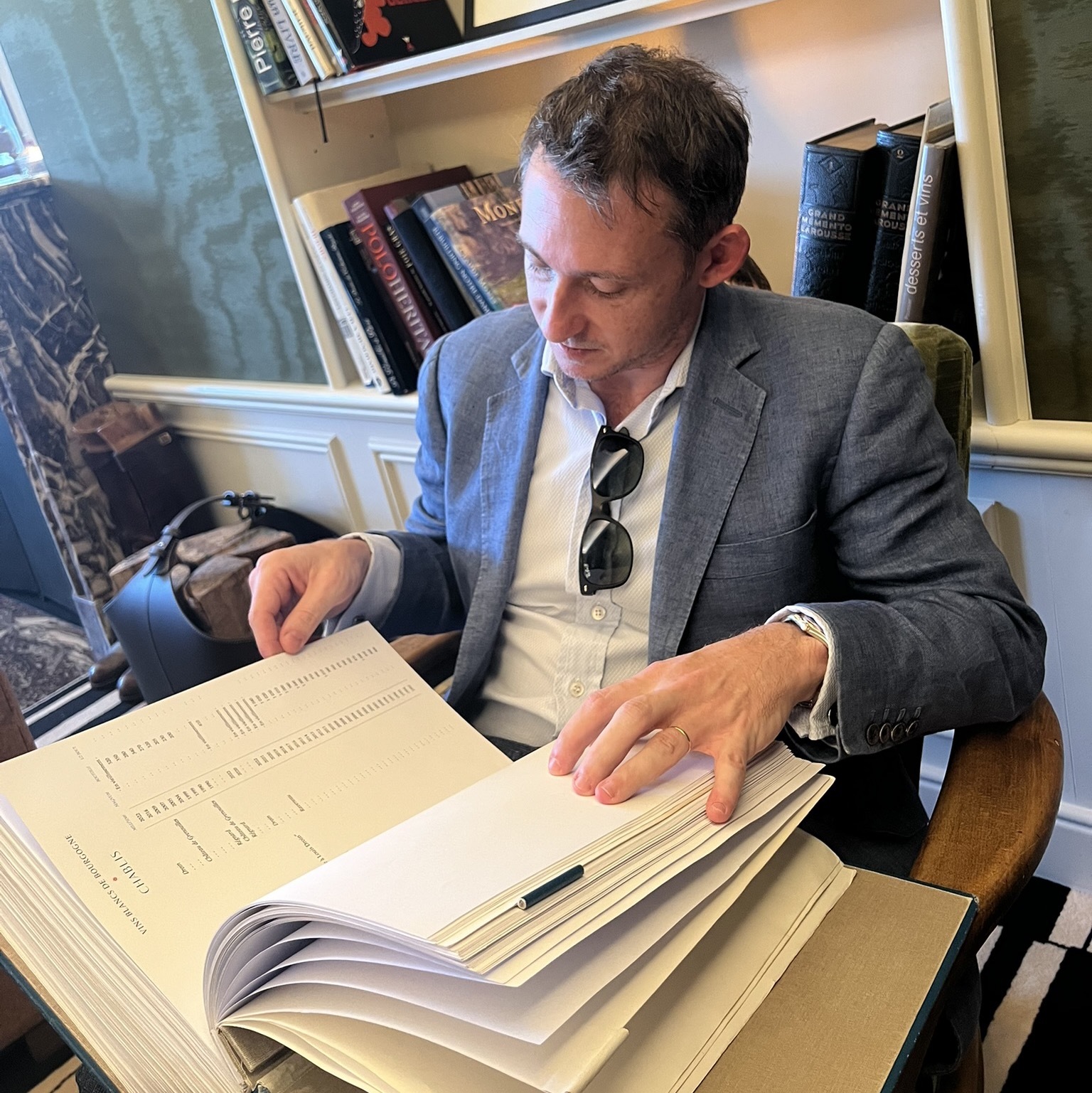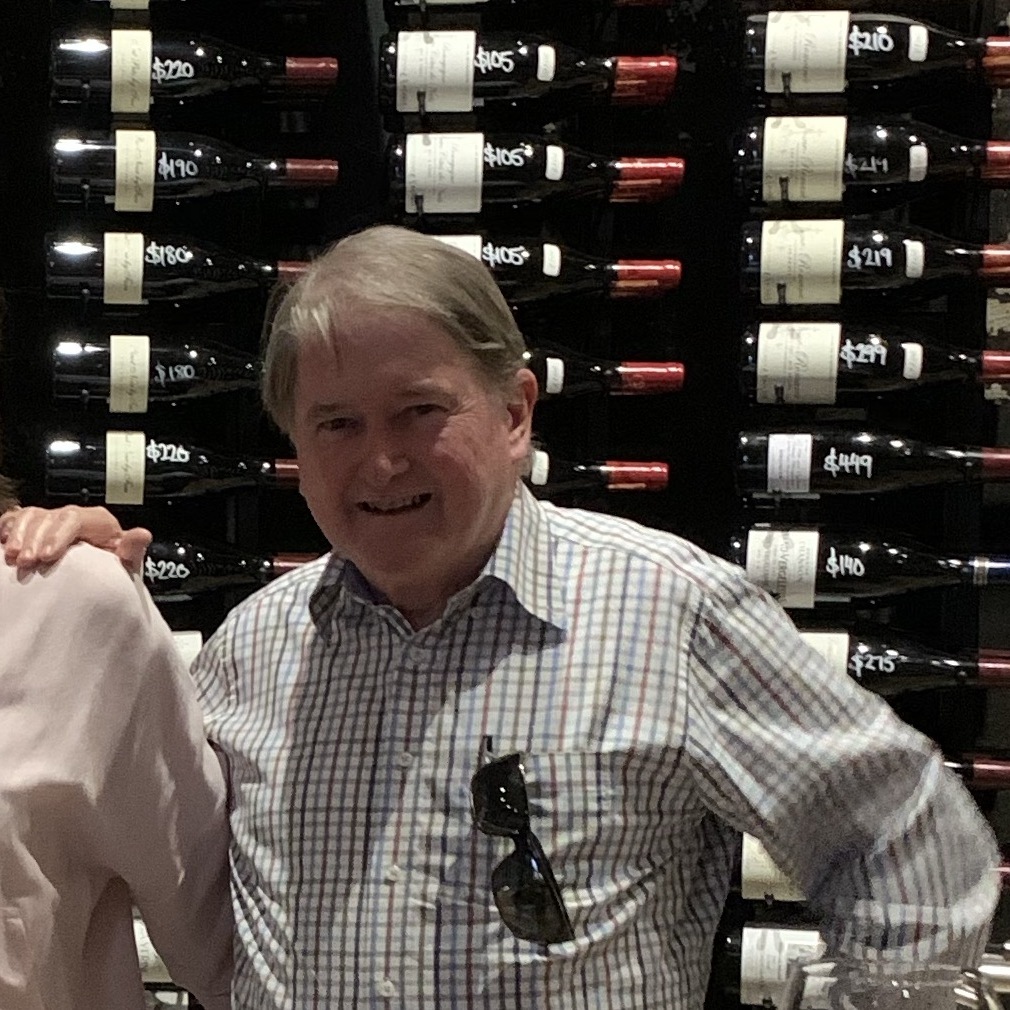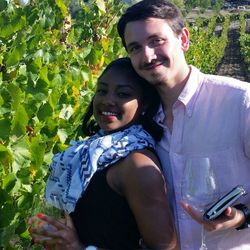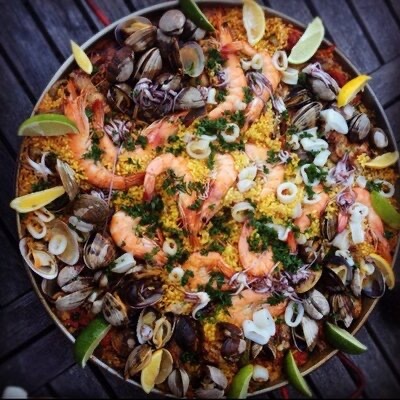Grand Hotel Private Label
Beaulieu Vineyard
Private Reserve Georges de Latour Napa Valley Cabernet Sauvignon 2021

Beeslaar
Stellenbosch Pinotage 2016
We have been working on our South Africa and Egypt trip for months. Diligently doing research and talking about it daily.
One of our stops will be a week on the Western Cape or as many define it, Stellenbosch. It has always been on my wine region bucket list for its wines and beauty. One of my goals was to find some excellent producers of Pinotage.
This Beeslaar is the private label of the Winemaker at Kanonkop, Abrie Beeslaar. Abrie makes a black label Kanonkop that sells retail at $200. That’s right, $200! It must be deliriously good if they can get $200 for it.
I found this 2016 Beeslaar at K&L for just under $37. It’s the 1st Pinotage that has my eyes wide open as to what can’t be done with this difficult varietal in the right hands. If his private label is this good, I hope to visit Kanonkop and taste their black label.
The nose reveals; dark chocolate raisins, dark eastern spices, plum and black cherry, blueberries, baked strawberries, blackberries, black raspberries, black raisin currants, smokiness and grilled meats, black pepper and a touch of white, some green vegetal notes, cinnamon, dark chocolate mocha bar, dark fruit steeped tea, gravely schist, touch of coffee grounds, dark fruit roll-ups, leather, tobacco with ash with fresh, dark red & blue florals.
The body is full, thick and rich. There is a dark, tarry, dusty tannin structure. This will benefit from 3-5 years plus in bottle but, it is crazy good. Sound, firm; structure, big tension, long length and very good balance. Dark chocolate raisins, smokiness and grilled meats, dark eastern spices that brings pronounced heat to the palate, black plum, plum and black cherry, blueberries, baked strawberries, blackberries, black raspberries, raspberries, black raisin currants, dark berry bubblegum, black pepper and a touch of white, tree bark with a touch of sap, some green vegetal notes, cinnamon, dark chocolate mocha bar, dark fruit steeped tea, gravely schist, dry stones, touch of coffee grounds, dark fruit roll-ups, new un-smoothed leather, tobacco with ash with fresh, dark red & blue florals. The acidity is round and splendid. The elegant, rich finish runs ripe fruits to dry tannins with dusty earth and shows an even tug of war with its fruits and earthiness.
It drinks like a combination of; Grand Cru Gamay, Shiraz and Northern Rhône.
I will be getting more of this and forgetting about it for 5 more years. Can’t wait for that moment and noting the changes.
This wine raises my excitement level for our trip with each sip.
Pinotage is a grape variety made from a cross of Pinot Noir & Cinsaut that was created in South Africa in 1925 by Abraham Izak Perold, the first Professor of Viticulture at Stellenbosch University...making it one of the youngest grape varietals.
Photos of; a shot of just how beautiful Cape vineyards can be, Winemaker-Abrie Beeslaar, Pinotage fruit near harvest and field-hands harvesting their very tall vines. Beeslaar has no Cellar Door currently. — 7 years ago


Grand Hotel Private Label
125th Anniversary Amador County Barbera 2014
Pleasant enough red wine. Went nicely with strong marinara based dishes abd with sweet dark chocolate. — 9 years ago
Grand Hotel Private Label
California Cabernet Sauvignon 2007
Very smooth — 9 years ago
Trader Joe's
Diamond Reserve Bersano Lot # 6 Barolo Red Blend 2020
The private label, as the Diamond Series are positioned as higher-end wines at Trader Joe's, and are broken into four tiers: Petite Reserve, Grand Reserve, Platinum Reserve, and, at the very top, Diamond Reserve label. These are typically made from the highest-quality grapes and great vintages. However, some flavors and complexity may vary as these are still sensibly-priced wines.
This Barolo from the Bersano Estate, 100% Nebbiolo grapes, a V.2020 is still evolving, the usual "tart & roses" profile remains as a backbone at the front of both nose and palate. The concentration of dark baked cherries, stewed strawberries and spices flavors are truly prominent while grippy tannins and texture take over by the mid-range of the palate. Bone dry and the degree of complexity is yet to be fully developed. Overall, the wine does the job at its price point, and may evolve a bit more. Cheers! — 6 months ago
Château Cheval Blanc
St. Émilion 1er Grand Cru Classé Red Bordeaux Blend 2001
On the nose, it's pure elegance. Kirsch cherries, ripe blackberries, dark cherries, plums, poached strawberries, raspberries haunt the background, vanilla, very light and soft spice, candied moist black earth, fresh violets and liquid, fresh, slightly perfumed red/dark florals. The full body is smooth, sexy and silky elegance. The tannins are round, beautiful and 65-70% resolved. The dark cherries and cherries roll the eyes back in the head. OMG! The fruits are simply garden of Eden beautiful. Poached strawberries, creamy black and regular raspberries, ripe black plum, overly extracted pomegranate, dry cranberries, soft, delicate top soil/dry clay, limestone, crushed dry rock powder, dry stones, black cherry cola/licorice, hint of anise, light notes of dry herbs, fresh tobacco leaf, sweet, dark, moist, turned earth, lead pencil shavings, rich, round mouthwatering acidity and a rich, elegant cherry driven finish that doesn't stop and I will not forget. Cheval Blanc is not a classified First Growth but on my palate it qualifies as such. Glorious bottle! I've had the 05 & 10 early. It will certainly out do this 2001 but not today. Photos of; the historical Cheval Blanc; which I prefer. I love the Bordeaux history. The new and modern 20 Million dollar addition. Shots of the cellar...the new concrete and stainless state of the art fermentation tanks. Producer notes and history...The name Cheval Blanc translates into white horse. The Chateau's history in St. Emilion traces back to 1832. It was the year the Ducasse family purchased land from Chateau Figeac. Prior to it being know as Cheval Blanc, the vineyard was better known as Le Barrail de Cailloux, which loosely translates into "barrel of tiny stones." Of course, the inspiration from the terroir's unique gravely soils. The original vines purchased from Figeac became what many people think is the best wine of St. Emilion, Chateau Cheval Blanc. For the most part, I agree with that. Back in 1832, Chateau Figeac was owned by Countess Felicité de Carle-Trajet. At that time, Chateau Figeac had grown to a massive 200 hectare estate; which is huge by St. Emilion standards. It was the Countess who decided to sell portions of their holdings. The breakup of the larger Figeac estate helped create a myriad of new St. Emilion wine making estates; which explains why so many Chateauxs include the word Figeac as part of their name. However, the owners of what was to become Cheval Blanc wanted to establish their own identity that was separate from Figeac. In 1838, the Ducasse family purchased what was to became the majority of Cheval Blanc. Some of the vines were previously part of Figeac. They began buying more St. Emilion vineyard land to create Chateau Cheval Blanc. In 1852, Mille Ducasse married Jean Laussac-Fourcaud, she came with a dowry that included their recently acquired Bordeaux vineyards that included 2 of the 5 gravel mounds running through the vineyards of Cheval Blanc and Figeac. Pretty amazing dowry! The Laussac-Fourcaud family built the chateau that is still in use today. The Laussac-Fourcaud continued to add holdings and increasing the size of the Cheval Blanc vineyards. By 1871, they accumulated a total of 41 hectares of vineyards in Saint Emilion. Chateau Cheval Blanc remains that same size to this day. A number of years ago, Cheval Blanc spent a boat load of money on updating and renovating to a modern facility in a true modern fashion that drastically departed from its original existing historical structure. Cheval Blanc has always tried to be innovative. Around 1860, when the chateau for Cheval Blanc was being built, extensive work was also being done in the vineyards. In fact, even then, Chateau Cheval Blanc was at the forefront of vineyard management techniques when they added a vast network of drains in their vineyards. Chateau Cheval Blanc was probably the first estate in the Right Bank to install this type of drainage system. At first, Chateau Cheval Blanc sold their wine under the Figeac label. Once Chateau Cheval Blanc began winning medals for the quality in their wine, they changed their label. That change included placing pictures of their medals on the label, which is still featured on their label today. More importantly, the wines were now sold under the name of Chateau Cheval Blanc. Cheval Blanc continued gaining in popularity by producing some of the best wines in all of Bordeaux during the 1920’s, 1940’s and 1950’s. In 1998 Cheval Blanc was purchased by Bernard Arnault and Baron Albert Frere for a 135 million Euros. They asked Pierre Lurton to manage the property for them. Today, Pierre Lurton also manages their other estates, Chateau d’Yquem, Chateau La Tour du Pin and Quinault l’Enclos. 1991 was one of the most difficult vintages in Bordeaux history, Cheval Blanc did not produce a wine. #RESPECT! In 2009, LVMH purchased the shares owned by Bernard Arnault in a private transaction. There was no official announcement of the price. However, rumors placed the price at close to 15 Million Euros per hectare (€615,000,000), making this the most expensive transaction yet, on a per hectare purchase price in the history of Bordeaux. 2000, 2005, 2009 & 2010 were near perfect or perfect vintages for Cheval Blanc and again in 2015, they produced candidates for wine of the vintage. In that same year at an auction held by Christie’s, a scarce, six-liter bottle of the legendary 1947 Cheval Blanc, (Probably the only real bottle in existence) sold for a record setting price of $304,375 dollars! In 2011, with the help of famed architect and Pritzker Architecture Prize winner, Christian de Portzamparc, Chateau Cheval Blanc completed a major construction and renovation project. This remodeling included; building a new winery, barrel cellars, vinification room, tasting area and efforts with the landscaped gardens. Even though the structure is modern in design (sigh), this new cellar cost over $20,000,000. The 39 hectare vineyard of Cheval Blanc has a complex terroir that consists of 3 different soils. Even though the vineyards are in one large parcel, this can be divided up as follows: 40% of their soils are gravel over multiple types of clay, including blue clay. Another 40% of their terroir has deep gravel soils, while the remaining 20% of their soils consists of sandy clay in the soil. The vineyard of Chateau Cheval Blanc is planted to 49% Cabernet Franc, 47% Merlot, and 4% Cabernet Sauvignon today, but the goal is to return to the original mix of 55% Cabernet Franc, 40% Merlot and 5% Cabernet Sauvignon. The vines at Cheval Blanc are old, averaging 45 years of age. They have 8 hectares of Cabernet Franc planted in the 1950’s. However, some of the older parcels of Cabernet Franc are close to 100 years of age, as they were planted in 1920. Cheval Blanc vinification takes place in 52 different temperature controlled, cement vats that vary in size, due to the needs of specific parcels to allow for each parcel being vinified in its own tank. Malolactic Fermentation takes place in tank. The wines are aged in 100% new, French oak barrels for close to 18 months before bottling. @ FL Yountville — 8 years ago


Edgefield Winery
Blanc de Noir Pinot Noir 2018
Staying at McMenamins Crystal Hotel this weekend to see Wolf Alice. Our welcome gift was this wonderful Blanc de Noirs bottle of bubbles from their private label winery. Apple, pear, orange blossom and white pepper on the nose. Very crisp and clean with hints of yeast roundness and pomelo with pie spice on the palate. Delicious. — 3 years ago
Taittinger
Comtes de Champagne Grand Crus Brut Blanc de Blancs 2007
Well...this was one hell of a week. There is only one way to wind it down. Reach for an excellent bottle of vintage Champagne.
My first thoughts are how delicate this is on the palate. Further, how unbelievable it will be with another 8-10 years in bottle.
The nose shows; slightly sour lemon, the good parts of lemon Pledge, lemon meringue, white stone fruits, pineapple fresh with lots of juice, grapefruit, lime pulp, honeysuckle, soft, haunting caramel, brioche, limestone & slightly, dirty, grey volcanics, saline, sea fossils, sea spray, bread dough, vanilla, white spices-light ginger with spring flowers, mixed floral greens & lilies.
The body is light on its feet and dances on the palate. Delicacy abounds. Its soft, gorgeous mousse right there with the best money can buy. Slightly sour lemon, lemon meringue, green & with more bruised golden apple, white stone fruits, pineapple fresh with lots of juice, grapefruit, lime pulp, touch of apple cider, honeysuckle, soft, haunting caramel, ginger ale into cream soda, brioche, nougat, toffee notes, lighter nuts without skin, limestone & slightly, dirty, grey volcanics, saline, sea fossils, sea spray, bread dough, vanillin, marzipan, white spices-light ginger with spring flowers, mixed floral greens & lilies. The acidity is mellow yet lively, gorgeous and as good as it gets. The finish is all luxury. So well knitted & balanced, elegant, rich but not overpowering and gently persisting several minutes.
Photos of; The House of Taittinger, their caves so chalky white and built on the famous Crayères Cellars of Reims: 2.5 miles of tunnels (they own 1/4 to 1/3 of it) cut out of chalk by the Romans, the portrait of Thibaud IV who was a king, lord, manager, singer, conqueror, explorer & 11th century Crusader all rolled into one from which, this Cuvée was the catalyst creation and part of the 600 plus hectares they own in Champange.
Some producer notes; Taittinger's history can be traced back to 1734, when it was originally known as Forest-Fourneaux, founded by Jacques Fourneaux who worked closely with local Benedictine monks to learn how to produce wine. They were just the 3rd Champange house.
The estate was bought by the Taittingers – a family of wine merchants – in 1932, and thanks to the great depression and subsequent low land prices, the family also picked up huge swathes of vineyard. From 1945-1960, Francois Taittinger established the cellars in the Abbey of Saint-Nicaise, and after his death in 1960 his brother Claude took over, pushing the estate into a Champagne house of world renown. Such was the status of the label that the Taittinger family soon expanded its business into other luxury goods. However, this eventually led to financial difficulties, and in 2005 the Taittinger brand – including the Champagne house – was sold to the American owned Starwood Hotel Group. The sale was badly received by the Champagne industry, with many fearing the new owners – unfamiliar with the culture of Champagne – would put profit ahead of quality.
Just one year later, Claude’s nephew, Pierre-Emmanuel Taittinger, who had always been opposed to the sale, negotiated a €660m deal with the Starwood Group, and the Taittinger family resumed ownership of the company.
In 2017, Taittinger planted its first vines in England, near a village in Kent, for its venture into English sparkling wine. The first bottle will be ready in 2023.
1/8/21 — 5 years ago


Clendenen Family Vineyards
Le Bon Climat Chardonnay 2011













Somm David T
Independent Sommelier/Wine Educator
93-95+ with proper aging.
This paired well with the flank steak w/ mash potato purée prepared by the Wynn Hotel.
A very solid & consistent producer of Napa Cabernet. I do enjoy the Napa 21 reds. High quality vintage.
WS Grand Tour Las Vegas 2025. — 6 months ago